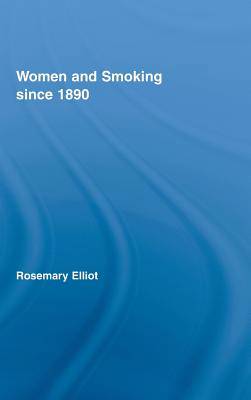
- Retrait gratuit dans votre magasin Club
- 7.000.000 titres dans notre catalogue
- Payer en toute sécurité
- Toujours un magasin près de chez vous
- Retrait gratuit dans votre magasin Club
- 7.000.0000 titres dans notre catalogue
- Payer en toute sécurité
- Toujours un magasin près de chez vous
Description
The changing face of the female smoker, from the lady smokers of the late nineteenth century to the lone mother of the late twentieth century, suggests that the history of smoking among women is not just about the assimilation of women into a male practice, but about the changing, and varied, circumstances of women's lives. In this innovative study, Elliott articulates the way in which the history of smoking among women raises complex questions about the construction of female identities in relation to smoking, and the implications of this for understanding smoking among women as a medical and public health problem. In addressing these questions, Elliott uses a variety of source material, from popular magazines to films to medical discourse, to map the history of smoking among women on to changing understandings of gender and social expectations of women over the twentieth century at a societal and an individual level.
Spécifications
Parties prenantes
- Auteur(s) :
- Editeur:
Contenu
- Nombre de pages :
- 242
- Langue:
- Anglais
- Collection :
- Tome:
- n° 29
Caractéristiques
- EAN:
- 9780415340595
- Date de parution :
- 07-09-07
- Format:
- Livre relié
- Format numérique:
- Genaaid
- Dimensions :
- 163 mm x 236 mm
- Poids :
- 557 g

Les avis
Nous publions uniquement les avis qui respectent les conditions requises. Consultez nos conditions pour les avis.






